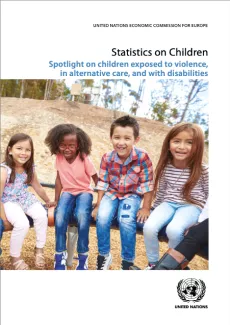Guidance on Statistics on Children 2022
About
The 1989 United Nations Convention on the Rights of the Child obliges parties to ensure all children have a fair chance in life. The development of national and international policies that provide all children and youth the best possible start in life and support a successful transition to adulthood requires robust and reliable information on a wide range of areas affecting children’s lives. The measurement and monitoring of children’s and youth’s well-being has improved in the last decade, but data gaps remain, particularly for children in the most vulnerable positions.
To improve the situation, the UNICEF Regional Office for Europe and Central Asia and Eurostat, UNFPA and UNECE proposed international methodological work on statistics on children and youth. In 2020, the Conference of European Statisticians established the Task Force on Statistics on Children, Adolescents, and Youth. This group of experts from national statistical offices and international organizations worked from 2020 to 2022 to develop the Guidance presented here.
The Guidance focuses on three groups of vulnerable children for whom existing data are inadequate: children experiencing violence, children in alternative care, and children with disabilities. It provides information about data sources, definitions, standards, methods, indicator reporting, and international comparability with specific examples chosen to highlight important initiatives or best practices. The Guidance discusses the main ethical issues around the collection and dissemination of data on children and concludes with recommendations for national statistical offices as well as for future international work.
